Two years ago, I blogged about an encrypted notebook from the Soviet Union. Within a few days, a reader solved this crypto mystery. It is high time that I introduce this solution in a blog post.
Occasionally, I use Google Translate to search for terms like “encrypted”, “secret writing” or “crypto mystery” in languages I don’t speak. Using Russian search terms, like тайнопись (“secret writing”) or закодированный (“encrypted”), proved especially interesting. Two years ago these expressions led me to an interesting find: a post in a Russian online forum (here is the Google Translate version) about an encrypted notebook. This notebook is now on my Encrypted Book List (position 00082).
The Russian notebook
The author of the post had discovered this notebook in the waste paper of an old country house. He published two page scans in the forum (if I have understood the post correctly, there are only three encrypted pages altogether). Here is the first one:
Here is the second scan:
Here are a few facts about the encrypted notebook:
- It is a squared exercise book as used in school.
- The writing probably stems from the 1980s, i.e., the late Soviet era.
- The paper is slightly affected by water.
- The book contains several pictures, the meaning of which is unclear.
The post in the Russian online forum received many comments. However, nobody came up with a solution.
In addition to the pages, the notebook owner posted the following two scans:
I don’t know what the relationship between these scans and the notebook is. Perhaps, a reader can help.
How my readers solved the mystery
After I had published a blog post about this encrypted notebook, several of my readers (including Merzmensch, Thomas Bosbach and Dave Oranchak) started analyzing it. Merzmensch wrote:
If it’s a substitution code [a MASC], let’s look to the one-character-words (especially little circle), which could be followings:
“и” – “and”
“я” – “me”
“o” – “about”, or: “oh”
In context of magic, if we suppose a spell or evocation of some ghosts, it could be either “o” (“oh” as appellative) or “и” “and”, since ancient Russian narratives often begin the sentence with “And…”.
Apparently, Merzmensch’s guesses were correct. The encryption method used turned out to be a MASC. Only two days later Merzmensch posted the solution. To find it, he had used the following method:
1) You make a PDF of the image.
2) You use form function (text form), where you find the unique chars and attend to it a text form with unique ID. So at the end you have all chars, still without values or solutions, but already with unique ID.
3) You look for sequences or recognizable words, put letters into the text forms, and – magic! – all other identical letters will appear.
Here is the key Merzmensch found:
The following pictures show scans of the PDF Merzmensch created:
The cleartext
Here is the cleartext (in Russian):
Page 1:
“Книга спящих дев
вначале не было ничего
лишь пустота затем огонь
породил все у во*игли на
небе звезды и из пыли
силы могучие слепили под
ле них тве? так ви(!)зникла
земля и долгое время не
было на ней ничего лишь
пустота и возникла жизнь
Page 2, left:
возникли травы и древа
живо[sic!]ные и птицы так и
возникли девы и были те
девы прекрасны и мудры
была у них сила знания
и разума и создали ини
города хрустальные и пи
рамиды в недра уходящие
так появилась царство
ому и жили девы счастли
во покуда не упал синий камень и в
месте яре вошел он в тв
ердь почвы взош[]и травы
иные коры же стали ядов
иты и вышли из них рыбы
отрастили хвосты и лапы

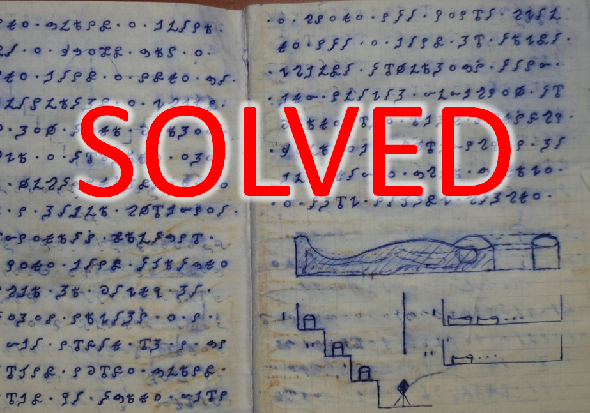
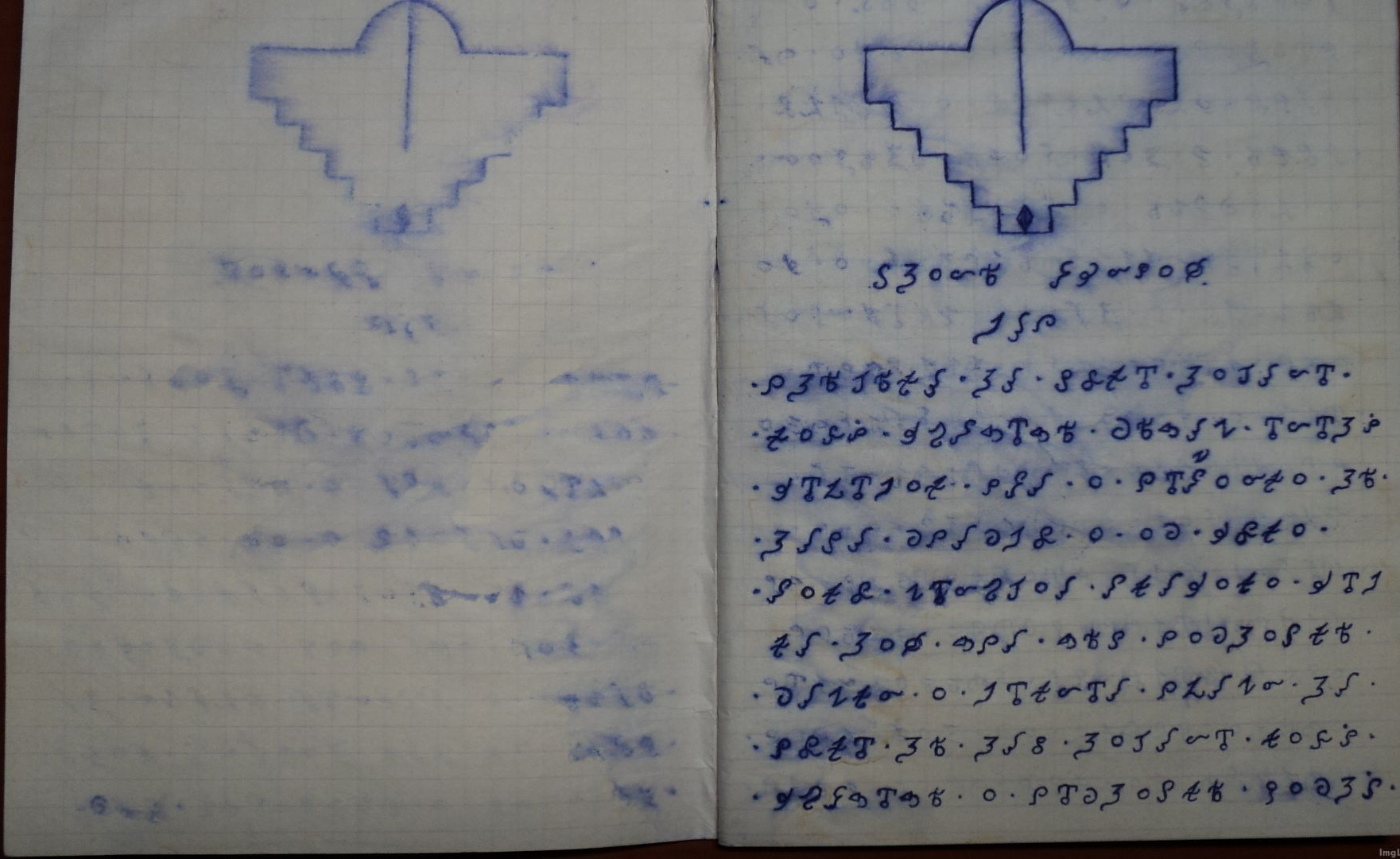
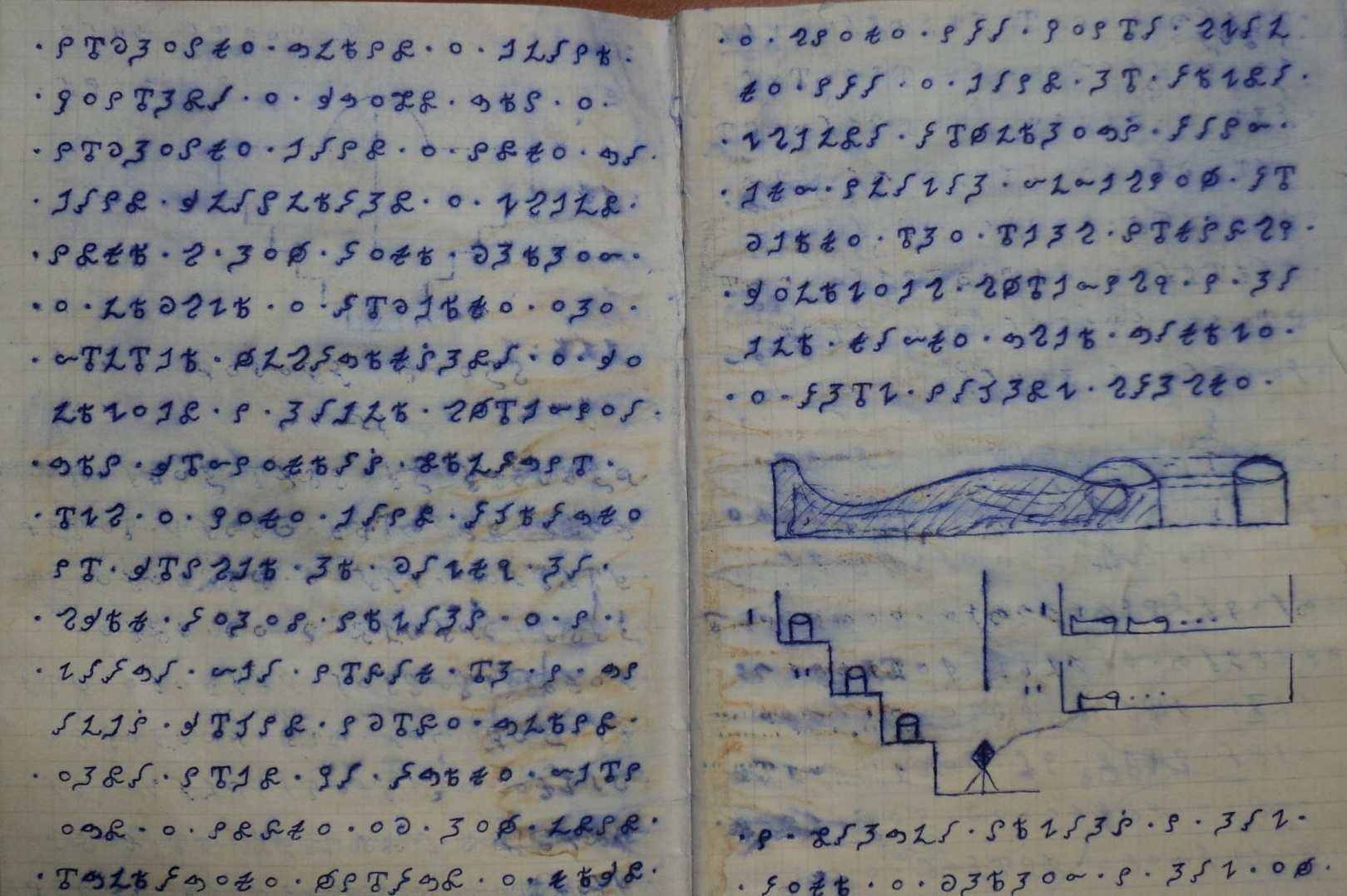
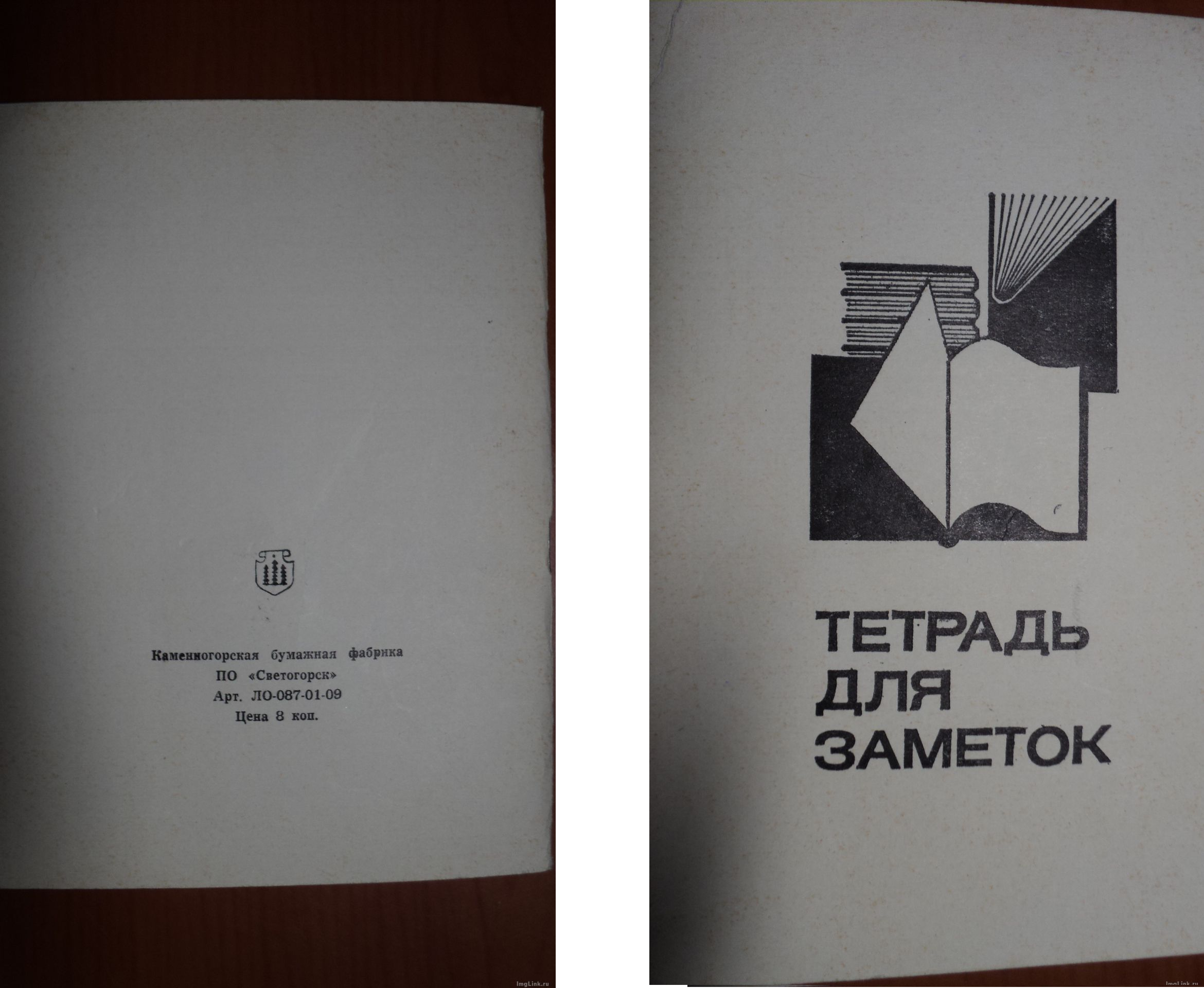


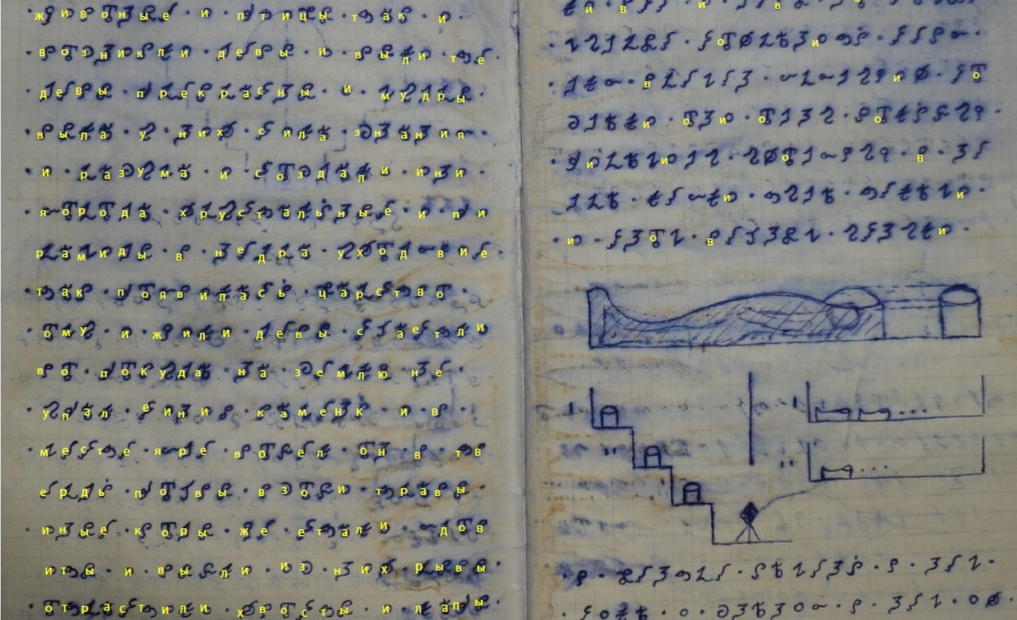

Kommentare (3)